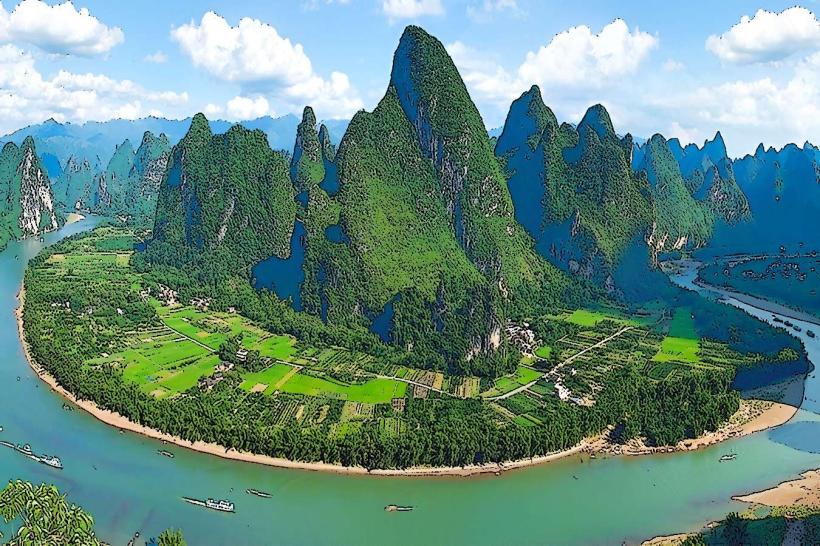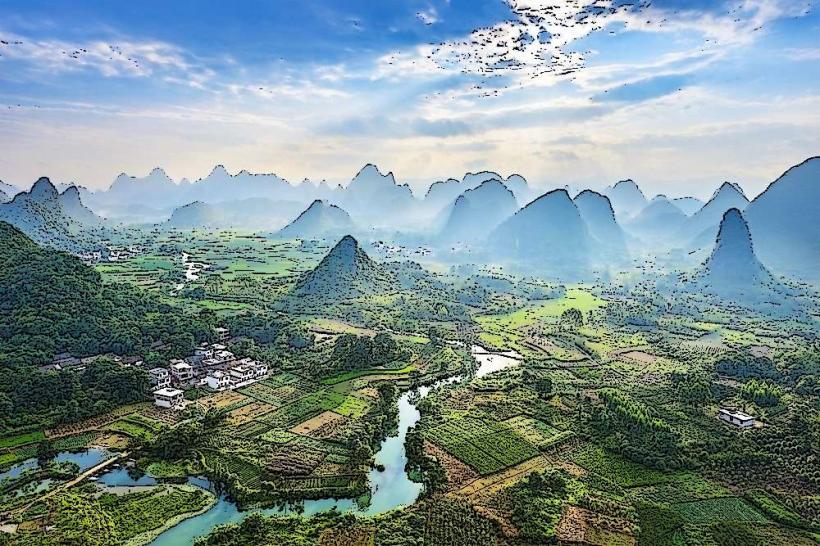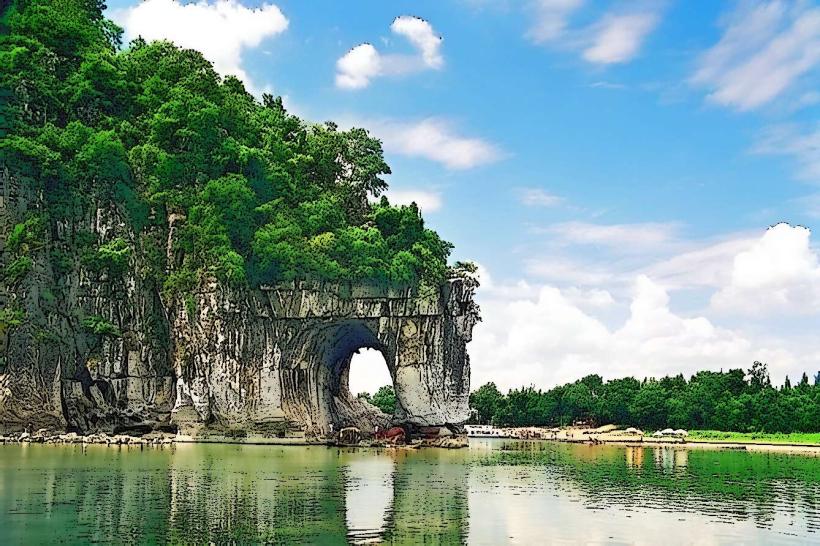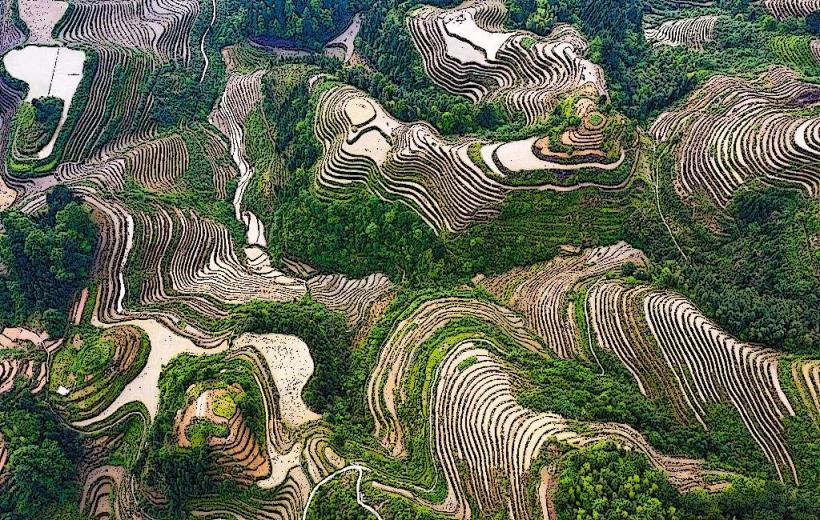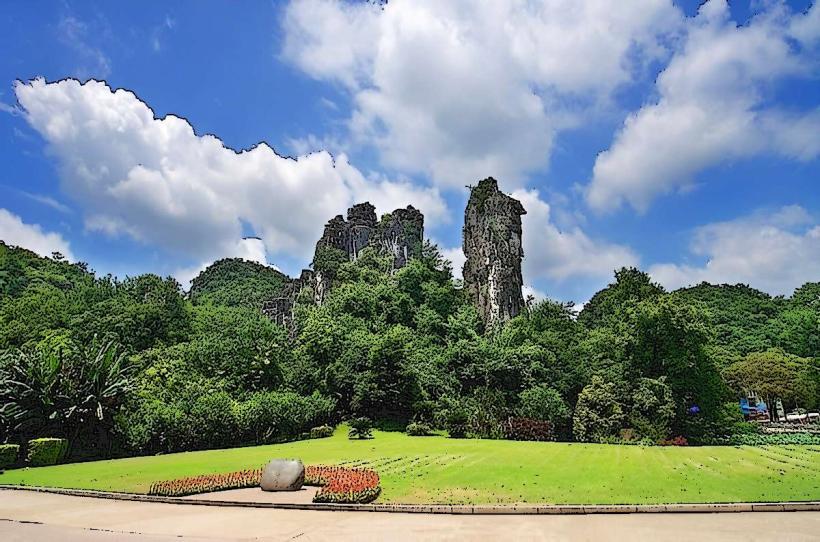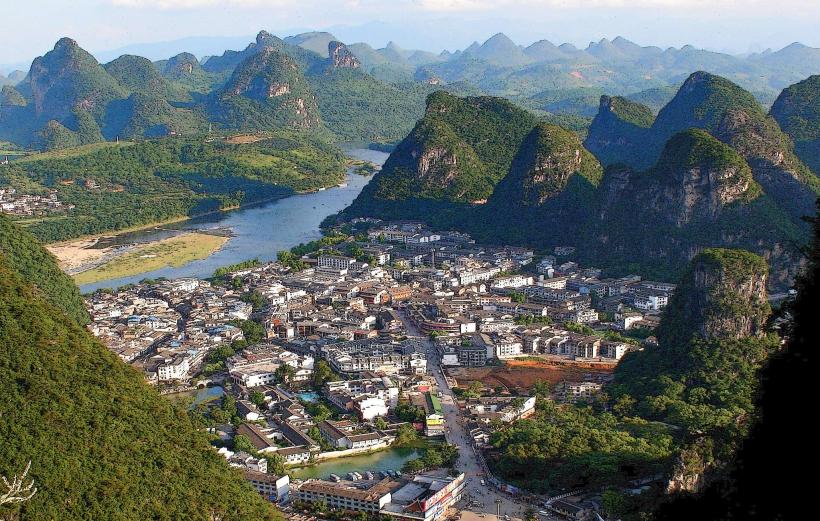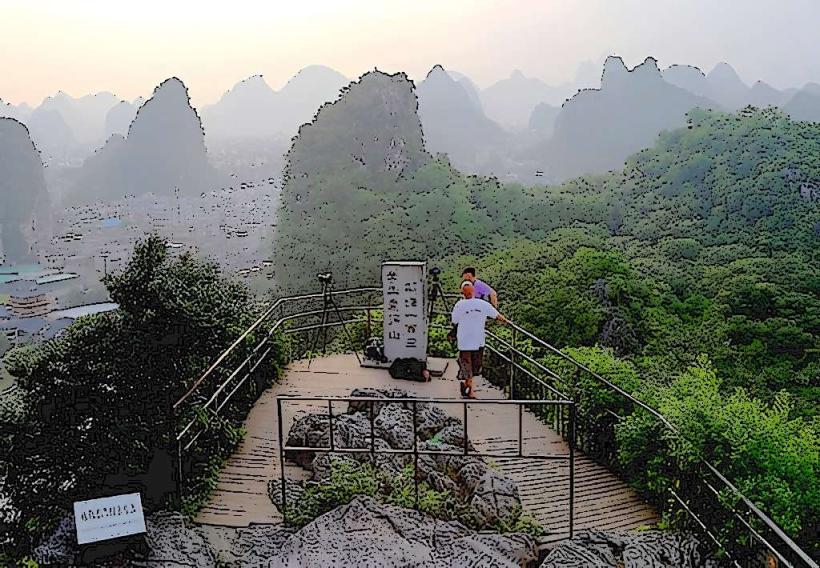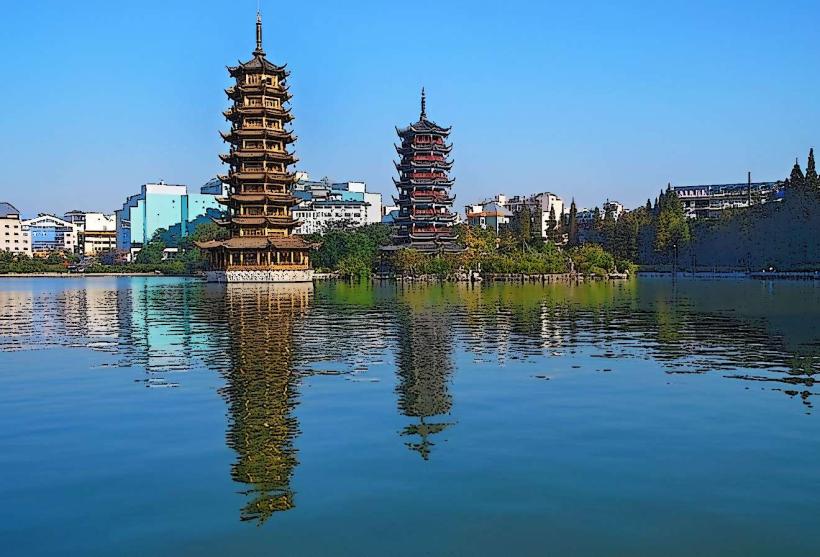Information
Landmark: Xingping Ancient TownCity: Guilin
Country: China
Continent: Asia
Xingping Ancient Town, Guilin, China, Asia
Overview
Xingping Ancient Town (兴坪古镇) sits in Yangshuo County, Guilin, in the Guangxi Zhuang Autonomous Region of China, its narrow stone lanes winding between old tiled rooftops and views of green karst peaks.Perched on the banks of the Li River, Xingping stands out as one of the Guilin region’s most beautiful towns, with jagged karst peaks rising behind centuries-old houses and quiet views of the water sliding past.Many travelers head here to soak up traditional Chinese culture and admire the lush hills and quiet rivers, all in a setting that feels genuine and far less touristy than most of Yangshuo.One.Xingping Ancient Town sits in Yangshuo County, roughly 25 kilometers from downtown Yangshuo and about 65 kilometers from Guilin, where the road winds past rice fields and quiet rivers.The town rests along the Li River’s edge, with jagged karst peaks rising behind and fields so green they almost glow, making it one of the most stunning spots in China.History: Xingping has stood for more than a thousand years, its narrow stone streets still echoing the footsteps of centuries past.Back in the Tang (618–907) and Song (960–1279) Dynasties, the city bustled as a key trade hub, its markets crowded with silk, tea, and the scent of spices.You can see the town’s long history in its carved wooden doorways and tiled roofs, many of which have stood since the Qing Dynasty (1644–1912).The name “Xingping” comes from the town’s rich past-“Xing” means prosperous, “ping” means peaceful-capturing its days as a lively trade hub where merchants once bartered silk under the warm afternoon sun.Number two.Key features: Xingping’s known for the jaw-dropping beauty of the Li River, where mist clings to sharp limestone peaks.Dramatic karst peaks and sheer cliffs rise straight from the river, wrapping the town in rugged beauty and drawing visitors with endless photo-worthy views.People often call this stretch one of the most picturesque spots along the Li River, where limestone peaks rise like ink strokes against the sky.The Li River winds through the heart of the region, its glassy surface reflecting misty hills, and in Xingping you can drift along it by boat or bamboo raft to soak in the quiet beauty.Limestone cliffs rise from the river’s edge, tucked between tiny fishing villages and stretches of thick, green foliage, giving the whole place an almost otherworldly feel.In the heart of town, Xingping Old Street winds past weathered stone houses, quiet temples, and small shops where the scent of dried tea leaves drifts into the air.Historic buildings stand shoulder to shoulder along the street, and it’s the perfect spot to wander if you want to soak up the scent of fresh bread from the corner bakery and feel the pulse of local life.You’ll see traditional Chinese roofs with curved eaves, and shopfronts packed with handmade crafts, small souvenirs, and the smell of fresh sesame cakes drifting out the door.In Xingping, especially along Old Street, the buildings still carry the graceful lines and curved roofs of traditional Southern Chinese architecture.Most of the buildings are crafted from wood and stone, their eaves curling skyward, with intricate carvings and red lanterns that glow softly, hinting at the town’s deep cultural roots.Number three.One of the best parts of visiting Xingping is gliding down the Li River on a boat or bamboo raft, passing misty hills and quiet fishing villages between Yangdi and Xingping.Between Yangdi and Xingping, the river winds past jagged karst peaks and quiet banks where the only sound is the rustle of bamboo leaves.Many call this stretch of the river the most beautiful, and it’s appeared in countless photos and paintings-sometimes with sunlight glinting off the ripples.Xingping Viewpoint offers one of the finest views of the Li River, where jade-green water winds past towering karst peaks.Climb the hill, and after a brief hike you’ll see the river curling below, the town spread out in miniature, and Nine Horses Mural Hill-its pale limestone cliffs shaped like a team of horses in the distance.Nine Horses Mural Hill, with its rock face patterned like a giant painting, is among the most famous natural landmarks near Xingping.From the river, the hill’s jagged rocks line up in a way that looks like nine horses frozen mid-gallop.This hill ranks among the most photographed spots on the Li River, its green slopes rising behind the town like a painted screen.On the Li River, fishermen still work with sleek black cormorants, sending the birds diving into the green water to snatch wriggling fish.These fishermen still work the old way-sending trained birds skimming over the water to catch fish-and if you’re lucky, you might spot them, a living fragment of China’s ancient fishing tradition.Number four.In Xingping, the Zhuang and Yao peoples have made their homes for centuries, their traditions woven into the town’s narrow lanes and riverside markets.These ethnic groups hold on to their traditions, visible in the bright patterns of their clothing, the music and dance of their festivals, and the careful handiwork in their crafts.Visitors can explore their way of life, then browse handwoven textiles, intricate embroidery, and smooth wooden carvings warm from the artisan’s touch.In Xingping, people celebrate the Spring Festival, Zhuang New Year, and the Dragon Boat Festival with lively drumming, colorful dances, and time-honored ceremonies.During these festivals, visitors get an intimate taste of local life-watching bright costumes swirl in traditional dances, savoring fragrant street food, and joining time‑honored rituals.Cuisine: In Xingping, you’ll find classic Guangxi dishes, bright with chili heat and a tangy kick that lingers like fresh lime on the tongue.You’ll find rice noodles-a Guilin favorite-alongside tangy pickled vegetables and fresh-caught fish from the clear waters of the Li River.You’ll spot street vendors sizzling food on open grills and tiny restaurants dishing up rich, authentic flavors.Five.The best time to see Xingping is in spring, from March to May, or in autumn, between September and November, when the air feels crisp and the hills glow in soft light.The air feels mild, and the mountains rise above a river that glints in the sunlight.In spring, hills turn a vivid green after the rain, while autumn brings crisp air and trees blazing with red and gold.From June through August, summer brings heat and sticky humidity along the river, yet it’s also when crowds pack the waterfront cafés and trails.If you can handle the heat and the bustle, this season bursts with color, like bright flowers spilling over garden walls.From December to February, winter brings colder days, but the streets stay calm and the cafés rarely fill, offering visitors a quieter, more peaceful escape.Number six.Getting to Xingping from Guilin is simple-hop on a bus at the main station or hire a private car for the winding drive through the hills.The trip usually runs between an hour and a half and two hours, though a jam of brake lights can add more time.Tourist buses run between Guilin and Yangshuo, pausing in Xingping where vendors sell steaming dumplings by the roadside.Xingping sits about 25 kilometers, or 15 miles, from Yangshuo, and you can get there easily by taxi or hop on a bus that winds past green rice fields.You can rent a bike and pedal past quiet rivers and bamboo groves on the scenic route from Yangshuo to Xingping.You can also take a boat along the Li River, gliding past Yangdi, Xingping, and on to Yangshuo, with mist curling over the green hills for a more scenic way into town.Seven.You can wander through Xingping for free, but certain spots-like the river boat tours or the hilltop Xingping Viewpoint-might ask for a small entry fee.

